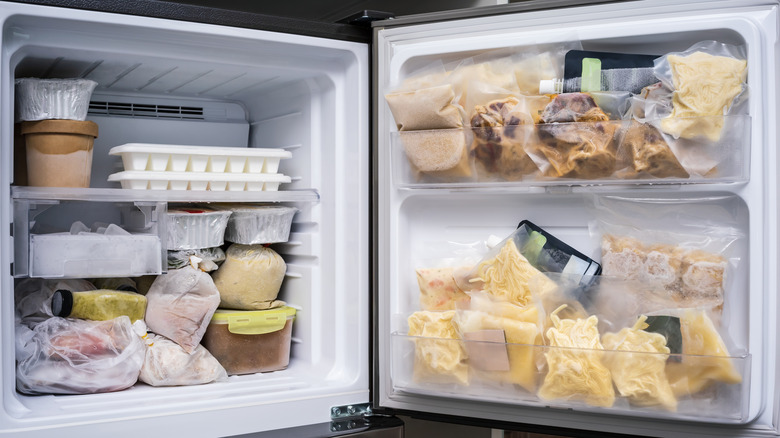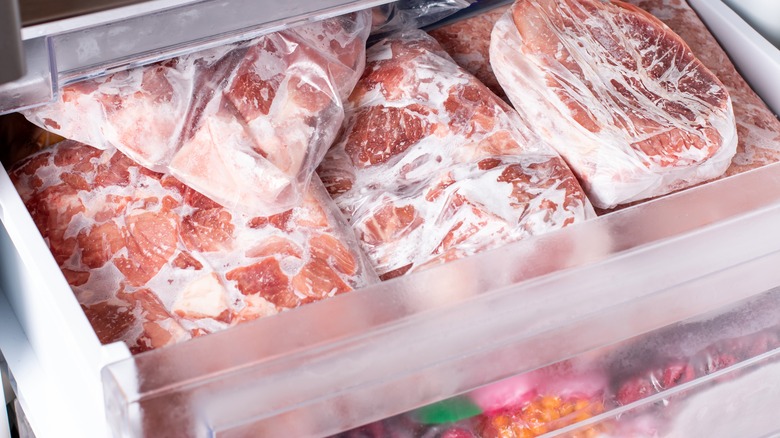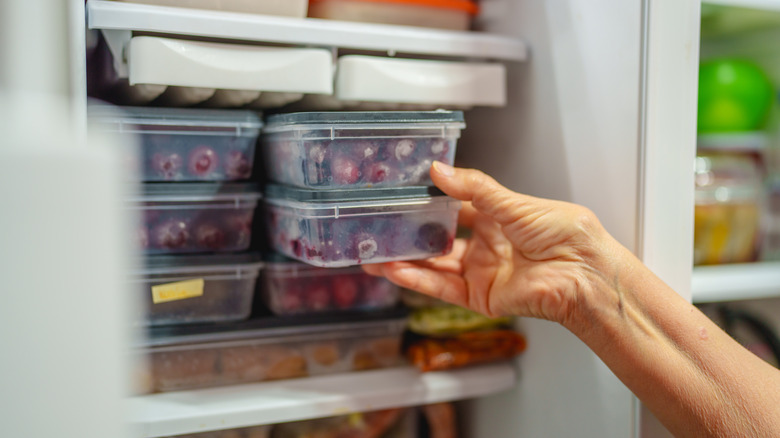In Case Of A Power Outage, How Long Does Food Last In The Freezer?
We may receive a commission on purchases made from links.
At some point, your refrigerator and freezer are going to lose power. Lightning storms, natural disasters, construction accidents, and planned system outages can all lead to power failure and a thawing freezer, and improperly thawed food can be a safety hazard. If your freezer houses only ice and some unidentified ancient relic no one will eat, you're fine. But what if it's fully stocked? How long will the food last and what precious goods will need to go?
It turns out there's a handy, comprehensive guide at FoodSafety.gov. It lists, item by item, what can endure being partially thawed, what can be kept, and what should be tossed to avoid risking food-borne illness. The general rule is that a full, properly sealed freezer will keep things nice and safe for about 48 hours. A half-full freezer is good for about 24 hours. This doesn't mean things won't thaw slightly, but it does mean they should stay below the threshold where harmful bacteria can flourish (40 degrees Fahrenheit). If the food still has ice crystals when the power comes back on (or the thermometer is below 40 F), it's probably good to refreeze. Most foods are safe above 40 F for another two hours, but can't then be refrozen. Otherwise, you're going to need to make some tough decisions.
The foods to keep and the ones to discard
The food safety guidelines explain how to deal with specific foods that exceed the safely frozen timeline. In general, if you're in doubt about the safety or quality of an item, toss it. For anything that may still be good to eat, there are two divisions to consider: Food that's still cold and contains ice crystals (though may not be frozen solid), and food that has been sitting for two or more hours at temperatures above 40 F.
Partially thawed foods, with visible ice crystals and that feel cold to the touch, can be refrozen. This includes most meats, cheeses, and dairy. Frozen milk and soft cheeses will lose some textural integrity, but still be safe, as will many fruits and vegetables. Properly wrapped breads and pastas should refreeze fine. On the other hand, ice cream and frozen yogurt do not refreeze well, and should be discarded.
The tough part comes after the freezer thermometer reads above 40 F. Anything that has been above that threshold for more than two hours runs the risk of bacterial contamination, particularly with so many foods clustered together. If this happens, you'll need to discard all meats, dairy (except hard cheeses), eggs, vegetables, frozen dinners or leftovers, and any pastries with cream fillings. Most breads, pastries, and fruits or juices can be refrozen, but check first, for any mold or off textures and smells. If you're certain an item has spent less than two hours above 40 F, refrigerate and use it as soon as possible.
Extending freezer life during a power outage
First and foremost, avoid opening freezer doors for the duration of the power outage. It's tempting to check on things (or to grab another ice pop), but each time you open the doors, you're letting the cold air out and the warm air in. It's the insulation of the sealed freezer that's protecting your food. If you know in advance that a power failure is coming, consider putting any in-demand items in a good-quality cooler filled with ice packs.
Likewise, if you have the opportunity to plan ahead (or respond quickly), consider stocking a cooler with frozen ice packs, or even dry ice. Add more when the power goes out, or along the way, to extend freeze time. Filling up the freezer also helps protect food longer if power outages are expected. The less air and the more frozen blocks of things like hamburgers, the longer everything will stay cold. This can mean the difference between food staying safe for one day or two.
Before you ever have to worry about a power outage, make certain you're properly storing and wrapping food in your freezer. This will save money and time in the long run. In addition, food will be better protected against freezer burn and subsequent textural changes as it thaws, and may stay frozen longer when the power is out. Label and date any packages or freezer storage containers so you can quickly identify what to keep and what to toss.


